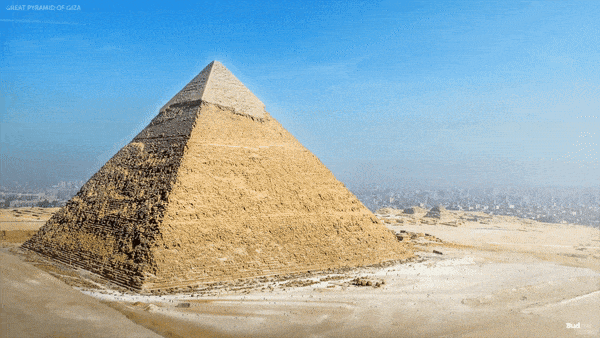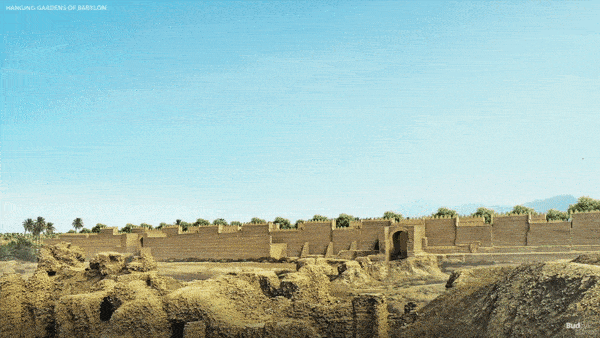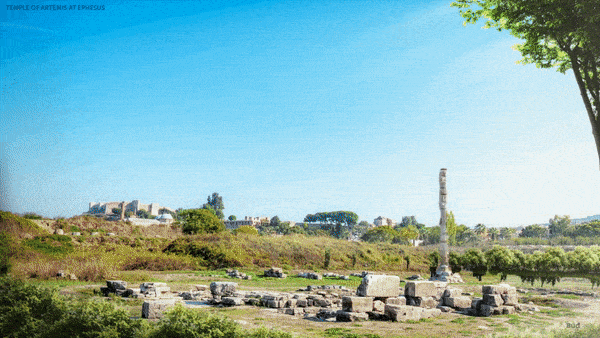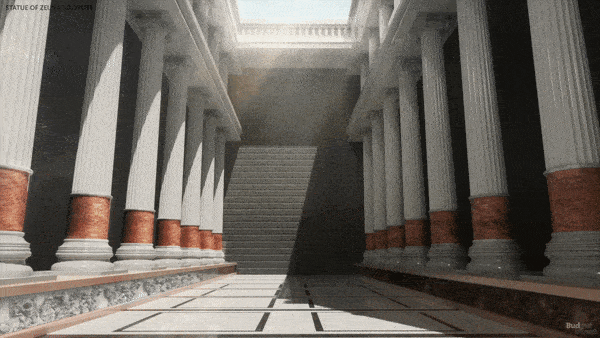The Seven Wonders of the Ancient World is a list of monuments from antiquity that was featured in various texts and poems dating from the 2nd to 1st century BC.
Hellenistic travellers, visiting the civilisations and landmarks across Egypt, Persia and Babylonia gave rise to what was essentially a travel book of “theamata”, meaning “sights” or “things to be seen”, featuring the sculptural and architectural monuments of the Mediterranean and Middle Eastern regions.
The first list was suggested by Diodorus Siculus of Sicily, an ancient Greek historian who wrote the Bibliotheca historica.
This was followed by Antipater of Sidon, Philo of Byzantium, Strabo, and Herodotus.
The Great Pyramid of Giza
The Great Pyramid of Giza, also known as the Pyramid of Khufu was constructed in the Giza Necropolis in Egypt by the pharaoh Khufu, son of Sneferu and the second pharaoh of the 4th Dynasty.
Inside the pyramid are three known chambers, the lowest being a rock-cut chamber in the bedrock which appears unfinished. In the superstructure are the Queen’s and King’s chamber, with recent studies detecting a large cavity above the Grand Gallery.
After the pyramid’s completion around 2560 BC, the monument would remain the tallest man-made structure in the world until the completion of Lincoln Cathedral in England in AD 1311 and is the only relatively intact wonder of the ancient world.

The Hanging Gardens of Babylon
According to legend, the Hanging Gardens of Babylon was constructed by the Neo-Babylonian King Nebuchadnezzar II for his Median wife, Queen Amytis in Babylon (although they have also been attributed to the mythical Lydian-Babylonian Queen, Semiramis).
The monument was described as an ascending series of tiered gardens built from mud bricks, resembling a mountain of greenery that contained various varieties of trees, shrubs, and vines.
The gardens are the only ancient wonder, where there is no archaeological evidence or definitive text to substantiate the existence of the monument.

The Temple of Artemis
The Temple of Artemis (also called the Artemision and the Temple of Diana) was a large temple complex constructed in the ancient Greek city of Ephesus (in present-day Turkey).
The earliest temple dates from the Bronze Age, but would be successively rebuilt with the final temple construction taking place around 323 BC.
The temple consisted of 127 columns, that surrounded the inner structure containing a Pronaos, Vestibule, Posticum, Opisthodomos and a Cella (housing the statue and altar dedicated to Artemis).

The Statue of Zeus at Olympia
The Statue of Zeus was created by the Greek sculptor Phidias (who was attributed to sculpting the statue of Athena Parthenos in the Parthenon) around 435 BC in dedication to the ruler of the Greek gods, Zeus.
Accounts describe the statue as a seated figure made from ivory plates and golden panels, measuring around 41 feet in height, and positioned in the sanctuary of Olympia in Greece.
Evidence for the statue’s existence comes from contemporary text and coins, with the statue being destroyed during the 5th century AD.

Mausoleum at Halicarnassus
The Mausoleum at Halicarnassus (also called the Tomb of Mausolus) was a large elevated tomb complex, built during the mid-4th century BC in the ancient Greek city of Halicarnassus (in present-day Turkey).
The mausoleum was constructed by the Greek architects Satyros and Pythius of Priene, for Mausolus who ruled Caria (a satrap of the Achaemenid Empire). The structure was destroyed by successive earthquakes during the 12th–15th century AD, with many of the stones being robbed to fortify Bodrum Castle.

The Colossus of Rhodes
The Colossus of Rhodes was a statue of the Greek sun-god Helios, erected in the city of Rhodes near the Mandraki harbour entrance by Chares of Lindos in 280 BC.
Contemporary text suggests that the Colossus was 108 feet in height and was built with iron tie bars to which brass plates were fixed to form the skin.
The statue stood for 54 years until Rhodes was hit by the 226 BC earthquake that toppled the Colossus. The remains lay on the ground (as described by Strabo) for over 800 years until it was claimed that the statue was melted down and sold to a Jewish merchant of Edessa.

The Lighthouse of Alexandria
The Lighthouse of Alexandria was a 330-foot-tall lighthouse, built in the coastal city of Alexandria in the Ptolemaic Kingdom of Egypt, during the reign of Ptolemy II Philadelphus (280–247 BC).
The building was finished during the reign of his son, Ptolemy II Philadelphus, and took twelve years to complete at a total cost of 800 talents of silver.
The lighthouse was severely damaged by three earthquakes between AD 956 and 1323 and became an abandoned ruin, with the last remaining stones from the monument being used to build the Citadel of Qaitbay.

Header Image Credit : Olaf Tausch





